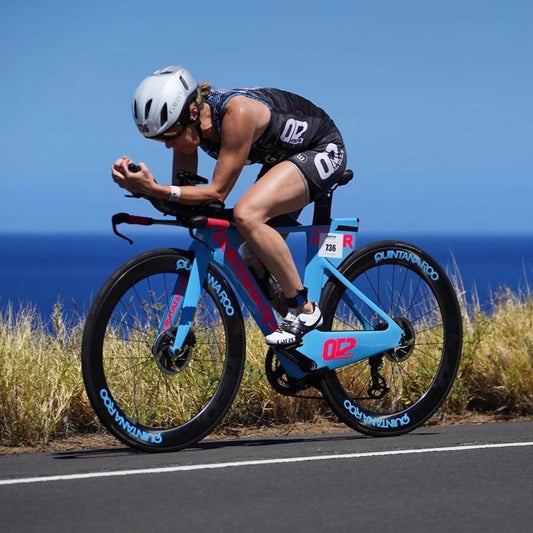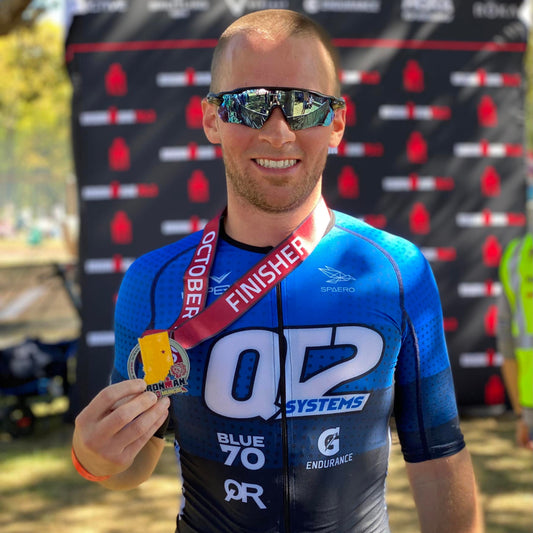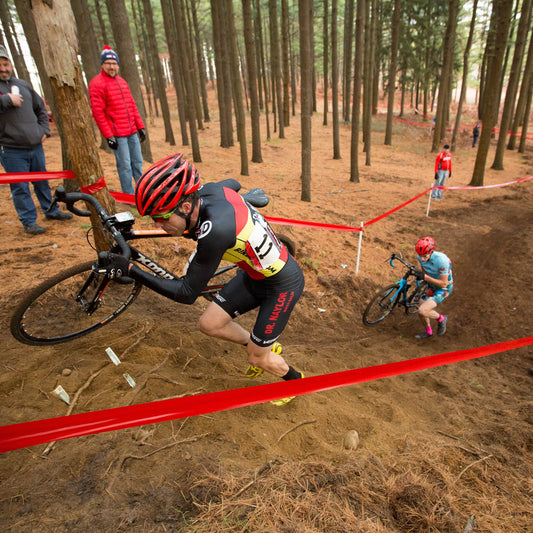The most “WHAT DO I DO???” time of year is generally the winter. The previous race season is ancient history, but the next “big” race may still be 6-7 months away.
During the winter, some folks never take a break, some folks take several months off, and some folks kind of do an “in-between”. Based on my years of racing professionally, and coaching for QT2 Systems, I’ve learned a set of principles that I think are the best, and sharing them will hopefully simplify some of your “winter training decisions”.
TAKE A BREAK - The “standard” I use for myself, and my athletes, is 2 weeks. We never go shorter, unless they have another high-priority race coming up in the very near future (i.e. within 2-3 months… although in that case, we’re not really dealing with a ‘preseason’, as it’s almost just an extension of the previous season). We’ll sometimes go longer, however, if the athlete seems particularly worn out, or if they’ve been dealing with a nagging injury, and need extra time to let it fully heal.
That said, there’s nothing “magical” about 14 days, as opposed to 12 days, or 16 days. But it seems to be enough time so that the athlete has a chance to “catch up on life”, reflect on the previous season, “mentally release” from the previous season, and enjoy some guilty pleasures. But at the same time, it’s not toooo long. So while fitness is lost, it’s not a TON of fitness, and it’s not so long that their guilty pleasures (late night partying, etc…) become “baked in habits”. I also think it’s a great carrot to help athletes get through the end of a long season – they know, that at the end of it, they get 2 weeks to unwind, eat nachos whenever they want, and do some partying.
Important note: when returning from the break, don’t try to “rush back into fitness” right away. The first 2-3 weeks should be focused purely on “re-establishing function”, and working out any kinks that may have accumulated during your break. Let go of the ego, and don’t worry, AT ALL, if your paces are way off from your “regular” training paces. Just stay patient, because the speed WILL return.
Important note #2: When deciding length of break, don’t feel “locked in” to 2 weeks. If you feel like you need more, then extend it by a week or two. Or, if you want to take the guesswork out of it, use the following formula:
Weeks off = (Hrs trained in previous year)/250
GAIN SOME WEIGHT - For the athlete who’s down near ideal race weight at the end of the season (BMI of 21-23, and body fat of 6-8%, for men, or BMI of 20-22, and body fat of 11-13%, for women), maintaining that body composition can be very stressful, and in combination with heavy training, often puts the body in a catabolic state. Hormones can get a little wacky, and it’s generally not healthy to sustain, year-round. Intentionally increasing body weight by 4-6% can be beneficial for a few reasons: a) it ensures that the body is getting adequate calories to support tissue repair b) it may help get the endocrine system back online at 100%, as being extremely lean for racing can mess with hormones, and c) it provides some extra resistance during run workouts, which has strength benefits.

STAY LOOSE - Winter is the most common time of year that I see soft-tissue strain/pull injuries popping up. I suspect this is because athletes finish their season, then take a break, but don’t continue to take care of their soft-tissue. Think about it this way: you just did your last race of the year, and likely emptied the tank. There is going to be a LOT of soft-tissue damage (i.e. microtears) after that race. When these microtears heal, some of them don’t heal “perfectly”, and you get adhesions in your myofascial tissue. This same process happens all through the year, but you help break up those adhesions through recovery workouts, and massage/rolling/yoga/etc… The difference at the end of the year is the athlete doesn’t continue with their soft-tissue therapy during their end of season break, and then when they start training again, their body is a minefield of myofascial adhesions, that were “baked in” during the down time, and they’re at high risk for soft-tissue injury/pain issues. The way to remedy this, of course, is to stay on top of your soft-tissue therapy during your down time. It shouldn’t be “stressful”: it should just be enough to keep the fascia loose. Weekly massage, extensive foam rolling 3x per week, or yoga 3x per week, should be adequate to take care of this.
DEVELOP A PLAN TO ADDRESS LIMITERS, BEFORE GOING “RACE SPECIFIC” - I typically divide training into 2 basic phases. The first phase is “limiter addressing”, and the second phase is “race specific prep”. The way you can break it up is to look at your peak race, and then work backwards from there. Let’s say you’re peaking for a half-Ironman in June, and that you and your coach have determined you’ll need 3 months of “race specific” workouts to peak for the race. These race-specific workouts would be exactly what you expect – tempo sets, bricks, long rides, some speed work, and a “typical” volume/intensity distribution, etc…
Well, that 3 months takes you back to March. So, what that does is it leaves you free to address your limiters in the period before March. Whether that limiter is bike strength, run durability, top-end swim speed, or whatever, you can use the time before March to really attack that limiter, and bring it up to par. Then, when you hit March, you can seamlessly blend your newly developed abilities into a more “typical” training distribution!
REFRESH GEAR, AS NEEDED - You just finished a full season of training & racing! And no matter how good you were about taking care of your gear, I guarantee that some of it is dirty, worn out, or about to break. Use this time to take your bike apart, and clean every part of it. Figure out what bolts are getting worn out, and replace them. Replace the cables, check for cracks in your bike frame… look it ALL over. Look for the nicks in your wetsuit that may turn into tears. Taking care if it now, may prevent you from having a panic attack when you discover an equipment issue 4 days before your first race…
So… those are the nuts and bolts about how I approach the offseason. Could I go into more detail? Sure! But hopefully this gives you some insight, and some things to think about.
This post was written by QT2 Level 3 Coach, Doug Maclean.





